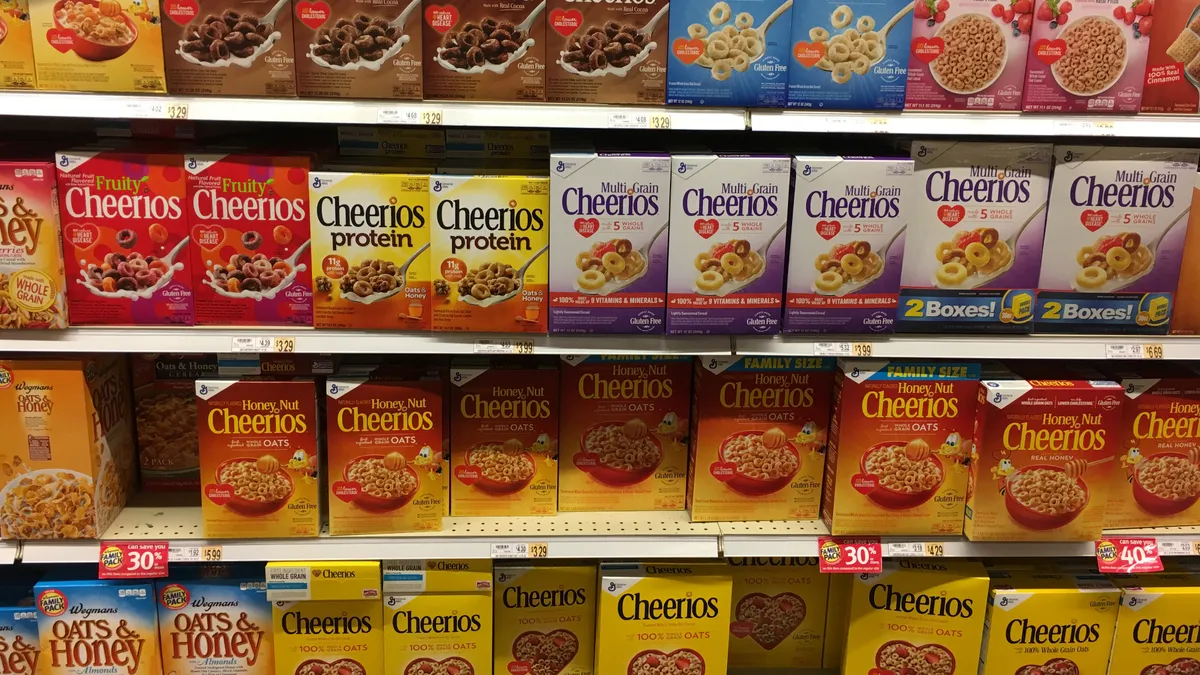Dive Brief:
- General Mills' fourth quarter earnings for 2018 revealed a 2% increase in net sales YoY while operating profit decreased 8%, according to the press release, mainly because of higher freight and inflationary costs.
- In the earnings call, CEO Jeff Harmening was upbeat: he said the company's global e-commerce business grew 50% YoY and 70% YoY in North America. As a result, General Mills plans to expand its distribution network for some of its top-selling brands.
- Harmening also said one of General Mills' top priorities for fiscal year 2019 will be to "begin the process of streamlining our North American logistics network, taking miles out of our system and optimizing inventory levels," according to the earnings call transcript.
Dive Insight:
General Mills' strategy is right on trend with other brands seeking to set themselves apart from retailers and other e-commerce newcomers in the food space.
Besides its inventory and logistics management goals, General Mills is focusing on creating a flexible and nimble supply chain. As traditional retail strategies are upended, taking ownership is one way to compete with new online food brands and adjust to fast-changing consumer tastes.
As noted in the earnings call, General Mills' Häagen-Dazs brand saw explosive growth in fiscal year 2018, and so as part of the logistics overhaul, the food company will focus on expanding and improving its cold chain to meet that consumer demand.
"We feel like we are making good progress on that front and the key for us is to invest in the right capabilities whether it’s e-commerce or growth things like capabilities and Häagen-Dazs for driving freezers or things like that and to make sure we are doing that while maintaining our efficiency," Harmening said.
But a big part of the plan will simply be growing the distribution network, Harmening said, especially because so many of the company's cereal brands — like Cheerios, Cinnamon Toast Crunch, Lucky Charms and Reese's Puffs — performed much better than expected.
"I think [distribution is] probably something that people underestimated that we came in this year with some distribution gaps, because we discontinued a lot of SKUs," Harmening said. "And as we look at fiscal ‘19 we look to either hold steady or grow our distribution just on the basis of our broad top line momentum."
General Mills got lucky: the company misjudged consumer demand in its cereal business, and if it had overestimated instead of underestimated, it could have suffered greater losses due to excess inventory. Now that the company is more attuned to consumers and adjusting its supply chain accordingly, it's likely to see greater sales growth in fiscal year 2019.














